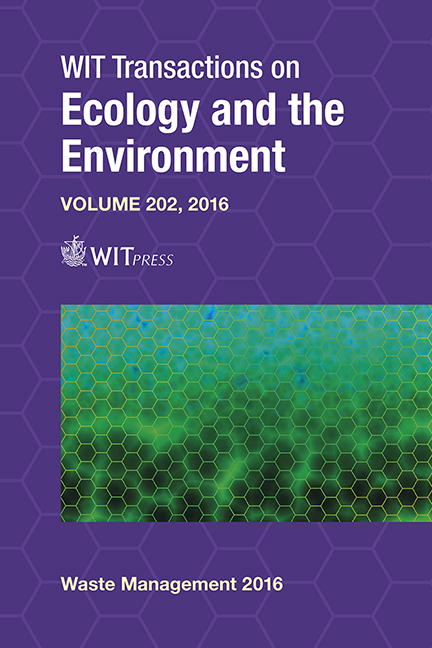Short-term And Long-term Studies Of The Co-treatment Of Landfill Leachate And Municipal Wastewater
Price
Free (open access)
Transaction
Volume
202
Pages
12
Page Range
359 - 370
Published
2016
Size
956 kb
Paper DOI
10.2495/WM160321
Copyright
WIT Press
Author(s)
Q. Yuan, H. Jia, M. Poveda
Abstract
The impact of the pre-treatment of landfill leachate on the co-treatment of landfill leachate and municipal wastewater was investigated through a short-term and a long-term study. The short-term study aimed to mimic the shock load of leachate on the wastewater treatment process. The leachate pre-treatment was achieved by coagulation and air stripping to remove partial chemical oxygen demand (COD) and ammonia. The long-term study aimed to investigate the effectiveness of leachate pre-treatment on nutrient removal of the wastewater treatment process in a long-term operational condition when air stripping was used as a means of pre-treatment. From the short-term study, it was found that at low mixing ratios (0.5% and 1%), pre-treatment did not produce any significant difference from the one without pre-treatment. When the untreated leachate mixing rate was increased (5% and 10%), the system was not able to achieve full nitrification during one cycle. However, the pre-treatment of leachate lowered the ammonia in the influent, therefore allowing for full nitrification. The long-term study demonstrated that even at a 10% mixing ratio, the high ammonia concentration in the leachate did not have a negative impact on the nitrification process. Due to the high non-readily biodegradable portion of COD in the leachate, the majority of the COD from the leachate ended up in the effluent thereby decreasing the effluent quality. It was found that at a 2.5% mixing ratio of leachate with wastewater, the overall biological nutrient removal process of the system was improved without compromising the COD removal efficiency.
Keywords
landfill leachate pre-treatment, biological nutrient removal, air stripping, landfill leachate to wastewater mixing ratio





